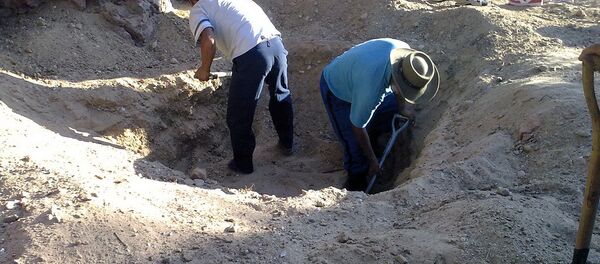Millions of muons, particles resulting from cosmic ray collisions in the atmosphere, are created every second. Accelerated to sublight speed, these particles penetrate tens and even hundreds of meters into the Earth’s surface at a rate of around 10,000 per square meter.
French archeologists have teamed up with their colleagues in Japan to use muon-detecting telescopes to look for empty spaces inside ancient pyramids and tombs holding the remains of pharaohs who departed this world thousands of years ago.
Muons passing through rock or other dense material slow down and eventually stop.
The idea is to catch the muons after they have passed through a pyramid and measure their energies and trajectories. Researchers can then compile a 3D image that reveals hidden chambers.
Using this method and sensitive muon photoplates, scientists have obtained the first “X-ray photo” of the Bent Pyramid and proved the existence of a hidden chamber located 18 meters above one, which had been found earlier.
The French and Japanese archeologists will continue their study of the Bent Pyramid and are going to do similar research inside the Giza pyramids in and King Tutankhamun's tomb where they are looking for the secret burial place of Queen Nefertiti.
The team expects the preliminary results of their study of the Giza pyramids to arrive early next month when the muon photoplates have accumulated enough collisions with “space particles.”



